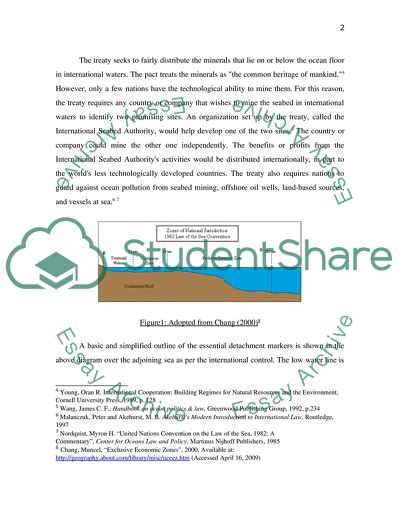Cite this document
(Conventional Distinction of Exclusive Economic Zone Report Example | Topics and Well Written Essays - 2000 words, n.d.)
Conventional Distinction of Exclusive Economic Zone Report Example | Topics and Well Written Essays - 2000 words. https://studentshare.org/law/1553806-discuss-the-concept-of-the-exclusive-economic-zone-introduced-in-the-1982-united-nations-convention-on-the-law-of-the-sea-choose-two-coastal-states-from-the-asia-pacific-region-and-discuss-the-implementation-of-exclusive-economic-zone-jurisdiction-in
Conventional Distinction of Exclusive Economic Zone Report Example | Topics and Well Written Essays - 2000 words. https://studentshare.org/law/1553806-discuss-the-concept-of-the-exclusive-economic-zone-introduced-in-the-1982-united-nations-convention-on-the-law-of-the-sea-choose-two-coastal-states-from-the-asia-pacific-region-and-discuss-the-implementation-of-exclusive-economic-zone-jurisdiction-in
(Conventional Distinction of Exclusive Economic Zone Report Example | Topics and Well Written Essays - 2000 Words)
Conventional Distinction of Exclusive Economic Zone Report Example | Topics and Well Written Essays - 2000 Words. https://studentshare.org/law/1553806-discuss-the-concept-of-the-exclusive-economic-zone-introduced-in-the-1982-united-nations-convention-on-the-law-of-the-sea-choose-two-coastal-states-from-the-asia-pacific-region-and-discuss-the-implementation-of-exclusive-economic-zone-jurisdiction-in.
Conventional Distinction of Exclusive Economic Zone Report Example | Topics and Well Written Essays - 2000 Words. https://studentshare.org/law/1553806-discuss-the-concept-of-the-exclusive-economic-zone-introduced-in-the-1982-united-nations-convention-on-the-law-of-the-sea-choose-two-coastal-states-from-the-asia-pacific-region-and-discuss-the-implementation-of-exclusive-economic-zone-jurisdiction-in.
“Conventional Distinction of Exclusive Economic Zone Report Example | Topics and Well Written Essays - 2000 Words”. https://studentshare.org/law/1553806-discuss-the-concept-of-the-exclusive-economic-zone-introduced-in-the-1982-united-nations-convention-on-the-law-of-the-sea-choose-two-coastal-states-from-the-asia-pacific-region-and-discuss-the-implementation-of-exclusive-economic-zone-jurisdiction-in.


